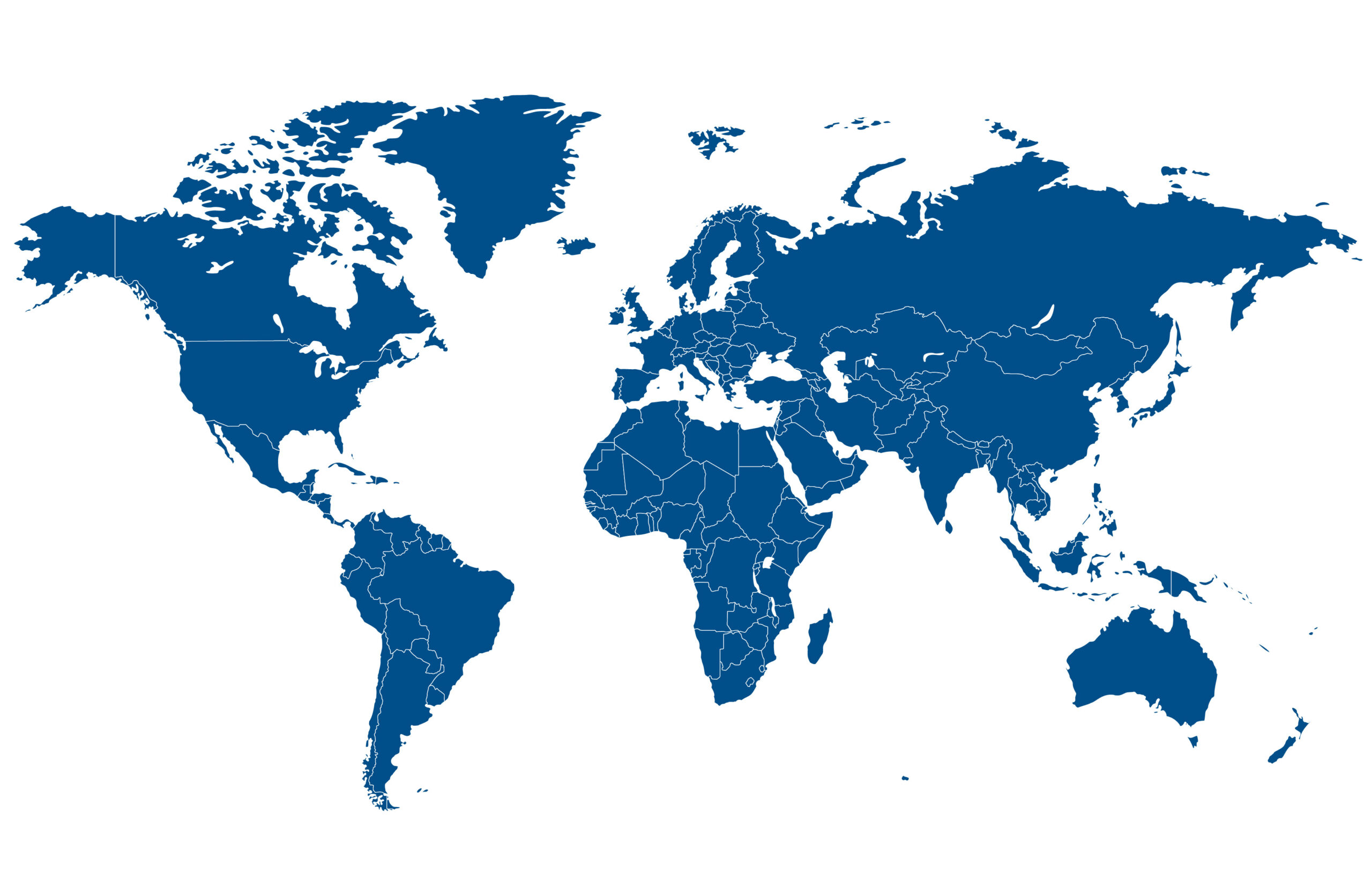Justifying change and gaining stakeholder support

This is the first in a series of articles on the five states of digital transformation.
The newly launched Public Sector Construction Digital Transformation Playbook details five important states in a digital transformation journey. Published by the Global BIM Network, the Playbook explains how programmes transition through the states of justifying, mobilising , developing, implementing and scaling to successfully achieve their outcomes.
Richard Lane is the Network’s Knowledge & Capacity Building Lead. He says that while it is helpful to learn about the five states in this order, programmes do not always follow a linear sequence. “The states describe a set of circumstances rather than a timeline.”
Justifying is when desired changes are identified, and stakeholder support is gained. It builds the case for change, aligns the objectives of the programme with wider priorities and enables the programme to proceed. It is typically the first part of a transformation journey, although it may overlap with mobilising a programme. Similarly, it may be necessary to revisit the justifying state at several points throughout a programme.
This article looks at the key challenges each of three user types, or personas, may face in the justifying state. It also outlines five key considerations and three typical outputs.
Key challenges for personas
The Playbook can help multiple personas, whether they are a policy maker, part of a transformation team, or an owner, procurer or operator.
A policy or strategy persona usually drives the justifying state, providing initial instruction and leadership, and publishing the outputs. They might also identify and recruit a leader of the transformation team to transition into the mobilising state. If justifying is being revisited during the life of the programme, a policy maker may request the revisit and assess the case for continued investment.
Usually, the transformation programme persona would not be formed at the early stages of justifying. However, they would be a lot more active if justifying is being revisited as part of an in-progress transformation programme.
A procurer, owner or operator might influence the policy / strategy persona to initiate a transformation programme. They could also represent the needs of the ‘problem owner’ and / or provide information on the current state to establish baseline measures and identify priority challenges and opportunities.
Five considerations
In the justifying state, the following considerations are addressed:
- Establishing a collective understanding of what BIM is and why it is of value;
- Understanding the challenges and opportunities;
- Defining the strategic principles for the programme;
- Securing the authority and resources to commence or continue a programme; and
- Establishing and maintaining leadership.
Typical outputs
The Playbook links to real world examples from across the globe which can be downloaded from the Network’s digital knowledge base, the Information Collection. Three typical outputs in the justifying state are:
- External / peer landscape reviews
- Formal approval to commence or continue
- Policy / public commitment
Read the Public Sector Construction Digital Transformation Playbook
Send us your feedback on the Playbook
Look out for the next in our series of articles on the five transformational states
Getting the most from the Public Sector Construction Digital Transformation Playbook

Imagine a policy maker who attends a conference and hears about BIM for the first time. They turn to the Global BIM Network’s website and find a wealth of information. So, where do they start?
The Network’s newly launched Public Sector Construction Digital Transformation Playbook provides a gateway to all the information relevant to each set of circumstances.
The Playbook helps each person identify the state of progress of the digital transformation project or programme that they’re involved in and their role based on the three personas profiles.
Users can then access directly practical examples in the Network’s Information Collection that relate to their work and even create their own bespoke version of the Playbook for future reference via the free MyPlaybook function.
It all starts with reading through the introductory overviews in the Playbook and understanding which more detailed sections resonate.
The Playbook organises digital transformation into five states. These help to pinpoint what to focus on at each stage. The five states are:
• Justifying the change and gaining stakeholder support;
• Mobilising the transformation programme to accelerate change;
• Developing the legal, commercial and technical framework;
• Implementing the change in practice onto projects; and
• Scaling the change and communicating progress.
The Playbook also identifies three groups of stakeholders, or personas, with their own needs, motivations and challenges in digital construction implementation. These personas are:
- Policy and strategy;
- Transformation programme; and
- Owner/procurer/operator.
As a policy and strategy persona, the policy maker may, for example, be involved in the justifying stage of a transformation journey. This may involve raising awareness of the need for change and its benefits, influencing stakeholders to achieve buy-in, and building a coalition to support the change. Stakeholders build a business case to understand programme costs, anticipated returns on investment, resource requirements and the removal of programme obstacles.
The policy maker can click directly from the Playbook to all resources in the Information Collection related to justifying. They can then use the filters to fine-tune their search, identifying ideas of what to do next and practical examples of what other countries have done in similar circumstances.
The policy maker now has the knowledge, ideas and inspiration, based on experience from around the globe, to start building the justification for their own transformation program.
Read the Public Sector Construction Digital Transformation Playbook
Watch a video providing instructions on navigating the Playbook and using the MyPlaybook function is provided in the ‘Using the Playbook’ section.
Register for MyPlaybook
Send us your feedback on the Playbook
Submit a resource to be added to the Information Collection
Look out for our upcoming series of articles on each of the five transformational states
New Playbook provides valuable insights into global construction digital transformation

The Global BIM Network has officially launched the Public Sector Construction Digital Transformation Playbook, making it easier to find information, ideas and inspiration on construction digital transformation.
The Playbook is for anyone interested in accelerating and growing the benefits of BIM implementation and digital transformation of construction. It enables users to identify common, good practice by synthesizing experiences from across the world.
The Playbook complements, adds context to, and links directly to the Network’s Information Collection. This digital knowledge base of over 500 resources from over 65 countries includes articles, guidance and policy documents to facilitate the introduction of BIM. Both the Playbook and the Information Collection are free online resources.
The Playbook is primarily targeted at public sector and multi-lateral organizations and provides a rich resource for those who are interested in encouraging, supporting, defining and implementing transformation.
The private sector can also use the Playbook as many of the principles, methodologies and processes highlighted in the Playbook are applicable to organizations of any type.
The Playbook also offers academia an insight into some of the challenges and opportunities around public sector transformation programmes. Academia can use the Playbook to demonstrate a robust and tested approach to digital transformation which is scalable and adaptable to many different contexts around the world.
The experience can be personalised through the free MyPlaybook function which enables users to save their most useful sections from the Playbook for quick access later. Once registered, users can simply click on the Save button on any page of the Playbook to collate their own selected content.
Network Chair Adam Matthews described the Playbook as a “significant transition” for the Network when he announced the start of the Playbook’s development at the second annual General Assembly.
“The purpose of the Playbook is to make sense of all the information that we have collated. It will help people find what’s most relevant to them and support them on their digital transformation journey.”
Read the Public Sector Construction Digital Transformation Playbook
Register for MyPlaybook
Send us your feedback on the Playbook
Submit a resource to be added to the Information Collection
Back to basics: The Four Pillars – Capability and Capacity Development

This is the latest in a new series of blogs looking at the fundamentals of building information modelling and the role of the Global BIM Network.
In this final blog on the four pillars of a public led BIM programme, we consider capability and capacity development. Together, these four pillars describe the common strategic areas for success.
• public leadership;
• communication and communities;
• collaborative framework; and
• capability and capacity development.
Stakeholders can employ three specific actions to develop capability and capacity.
ONE Run pilot projects and promote training to encourage early successes. Pilot projects are an important mechanism for testing and demonstrating how BIM processes and practices can be employed. They help stakeholders see the practical benefits of BIM in real-world scenarios. Such initiatives come hand in hand with training to encourage early successes. In Latvia, the Construction Digitalisation Centre at Riga Technical University partners with other groups to provide live online and in-person BIM training. Modules include a wide range of topics: from general BIM awareness through to practical classes on specialised BIM software and modelling.
TWO Increase the use of public procurement as a driver for industry capacity development. Public procurement policies specifying the use of BIM can act as powerful levers. National policy, strategy and standards can encourage industry to invest in digital technologies and practices. BIM Loket details the rollout of BIM legislation and regulations in the Netherlands and looks at the potential roadblocks and benefits from taking such an approach.
THREE Measure progress and produce case studies to increase industry awareness and support. Many organizations share their BIM tools, learnings and successes online. Planbim provides the Mibim open, self-assessment web platform. Organizations can use it to measure their BIM maturity level. At the end of the evaluation, the platform provides a report with key findings and recommendations. The BIMinNZ group in New Zealand has produced a series of case studies demonstrating the costs, benefits and risk management aspects of using BIM. The group’s examples span BIM applications in wastewater treatment plant, social housing, healthcare, tertiary education and more.
The Global BIM Network’s Information Collection contains many examples of how capability and capacity development is enabling BIM processes and practices.
To join the Global BIM Network, email us or visit our website.
Back to basics: The Four Pillars – Collaborative Framework

This is the latest in a new series of blogs looking at the fundamentals of building information modelling and the role of the Global BIM Network.
Public sector led BIM initiatives of all kinds can benefit from a strategic framework that helps deliver robust and effective programmes. This framework is based on four pillars or areas:
• public leadership;
• communication and communities;
• collaborative framework; and
• capability and capacity development.
In this blog we look at the third of these pillars – the need to have a collaborative framework – and identify four actions that can be used to develop this strategic area.
ONE Assess and address legal, regulatory, procurement and policy barriers. This is an important step towards facilitating collaborative working and sharing of data. The National Assembly of the Republic of Slovenia has published and adopted a law governing conditions for the construction of buildings and other related issues. The Building Act (GZ-1) clarifies that BIM processes are to be used in relevant project documentation.
TWO Develop or use international standards for data requirements. BIM Loket in the Netherlands is creating an Atlas of Open BIM Standards describing not only the standards it manages but also important international standards and norms.
THREE Reference international standards for encouraging collaborative processes and sharing of data. The UK’s built environment sector is on a journey towards a smarter, more efficient and sustainable future – a vital stage of which is adoption of the UK BIM Framework and its guidance. The UK BIM Framework sets out the approach for implementing BIM in the UK ensuring a smooth transition in the integration of BS EN ISO 19650 series, the international standard for BIM, within its suite of guidance and tools.
FOUR Produce guidance and tools to support the upskilling of industry and development of academic curricula. In France, for example, a BIM skills repository has been created for all trainers. This allows trainers to offer digital programmes particularly suited to the real needs of contractors and construction companies. It is part of a skills framework published under the ‘Support Skills Development and Develop Appropriate Tools’ workstream of the Digital Building Transition Plan (PTNB). In another example, the Czech Standardization Agency is rolling out BIM curricula in specialist secondary schools and universities.
The Global BIM Network’s Information Collection contains many examples of how collaborative frameworks are enabling BIM processes and practices.
To join the Global BIM Network, email us or visit our website.
Back to basics: The Four Pillars – Communication and Communities

This is the latest in a new series of blogs looking at the fundamentals of building information modelling and the role of the Global BIM Network.
Change management initiatives require complex long-term thinking and behavioural shifts. It is easy to lose speed and direction. Yet, when it comes to BIM, a four-part framework provides both a route map for stakeholders starting their BIM journey and a cross-check to those that have already begun.
The framework is based on four pillars or areas:
• public leadership;
• communication and communities;
• collaborative framework; and
• capability and capacity development.
In this blog we look at the second of these pillars – communication and communities – and how stakeholders can employ three specific actions to develop this strategic area.
ONE Engage with industry stakeholders early and frequently. This is essential in supporting any industry change process and can be done in many ways. Global BIM communities are engaging with industry stakeholders through mechanisms such as events, feedback loops, websites, social media, case studies, training, and co-authoring documents. Many are using iterative processes enabling stakeholders to be part of the conversation, contribute their own perspective and for all to learn from each other. For example, Empresa de Desarrollo Urbano (EDU), the Urban Development Corporation of Medellin, in Colombia is gaining optimal results by working in close collaboration with contractors.
TWO Participate in and provide encouragement for regional and special interest networks to disseminate best practice. Many networks are working at many levels. For example, the Latam BIM Network, the BIM network for Latin American Governments, brings together eight countries in the region to fast-forward national digital transformation processes through employing BIM in the construction sector. In Slovenia, the voluntary, independent organization siBIM enables engineers and people working in associated roles to learn from each other’s experiences and enhance their professional development in BIM.
THREE Use mass communication tools to reach audiences. These tools could include online media, events, web, and social media. They are used to spread and share messages about BIM as widely as possible. Good examples are the EU BIM Task Group’s website and the LinkedIn and YouTube initiatives by Chile’s Planbim.
The Global BIM Network’s Information Collection contains many examples of how communication and communities are enabling BIM processes and practices.
To join the Global BIM Network, email us or visit our website to register.
Back to basics: A better view of BIM around the world

This is the fourth in a new series of blogs looking at the fundamentals of building information modelling and the role of the Global BIM Network.
When the Global BIM Network was established in March 2021, it set out to spark both thinking and action on transforming the global built environment. From small beginnings a significant global resource has grown. In this blog we look at how an initial snapshot view of BIM around the world has developed into the Network’s Information Collection and how this is providing a better view of BIM around the world.
A simple infographic with linked artefacts across various countries captures early foundational thinking about the Network. The infographic demonstrates the interplay between BIM processes and practices at three distinct levels: national, organizational, and project.
It encapsulates the Network’s approach to its work: that BIM is about much more than technical change. It underscores that an entire sector will only change when stakeholders act at each of these three levels.
The interactive infographic provides a preview of how sectoral change starts at the national level – in policy and regulatory environments, for example. This cascades down to the organizational level – at which organizations understand how developing their own BIM processes can help them achieve the outcomes they desire. Finally, comes implementation at the project level.
While the Network’s early work started with this snapshot, by working with its community the Network has developed a collective knowledgebase providing a much broader view. The resultant online Information Collection is a global knowledgebase of BIM resources with links to downloadable documents or official websites of governmental and non-governmental organizations.
The Information Collection is organized geographically and under four categories. These are: Public leadership; collaborative framework; communication and communities; and capability and capacity building. Users can also search by level, region, country, resource type and transformation state.
The Information Collection now contains over 400 artefacts from over 60 countries and continues to grow. It continues to enable stakeholders in the global built environment to gain a better view of BIM around the world.
You can access the Global BIM Network’s Information Collection here.
To join the Global BIM Network, email us or visit our website.
Back to basics: Value

This is the third in a new series of blogs looking at the fundamentals of building information modelling and the role of the Global BIM Network.
Increasing numbers of people and organisations are engaging with the Global BIM Network. So, we are taking the opportunity to revisit some of the thinking underpinning the creation of the Network and how this can help you on your BIM journey. In this blog we look at how the Network delivers value in three distinct areas.
FIRSTLY: The Network delivers value directly to its members. This comes in multiple forms. Members tells us they can learn much faster about BIM processes and practices by connecting with other people and organizations with shared issues, challenges, or goals. Similarly, they are benefiting from the large amount of information signposted, organized, and made readily available on our website. Members also benefit as initiatives by increasing numbers of public sector and multi-lateral organizations build critical mass. This provides legitimacy, confidence, and a level of encouragement for others to also adopt BIM processes and practices.
SECONDLY: The Network delivers value indirectly to the public procurers, owners, suppliers, and maintainers of the built environment. It creates a multiplier effect in which successful national and regional collaborations can strengthen the call for digital solutions based on open standards.
THIRDLY: The Network delivers better outcomes and performance of the built environment for people. Over time, as momentum builds, the Global BIM Network is helping to enhance the public estate globally, supporting UN Sustainable Development Goals and inclusive economic growth.
In the long term, this will bring multiple benefits. These include improved energy efficiency and resiliency of buildings and assets, optimisation of the whole-life cycle of infrastructure assets, reduction of material waste, targeting carbon neutrality and the lessening of costly errors.
The Network’s initiatives also encourage the global construction sector to develop a highly skilled digital workforce: in turn both helping improve the image of the construction and infrastructure sector, and ensuring life-long employment opportunities for generations to come.
In the next blog in our ‘Back to Basics’ series we will look at how the Global BIM Network is helping develop a better view of BIM around the world.
Access more information on how the Global BIM Network delivers value here.
To join the Global BIM Network, email us or visit our website.
General Assembly 2022

Details of a new Playbook for public sector construction were revealed at the Global BIM Network’s second annual General Assembly on 1 December 2022. The announcement was among the highlights of the online event which drew attendees from 36 countries. The audience included policy makers, BIM practitioners and change management specialists from the public sector, NGOs, and multi-lateral institutions.
The General Assembly was delivered in Spanish and English and held twice to accommodate attendees in different time zones. It was hosted by Alanna Gluck, Delivery and Engagement Lead at the Global BIM Network Secretariat, and featured best practice case studies from Australia, the Czech Republic, Colombia, and Argentina. Lessons learnt at the Assembly will form case studies for the Playbook. They will help to guide global best practice in the digital transformation of the construction sector via BIM.
Key messages
Global BIM Network Chair Adam Matthews announced the development of The Digital Transformation Playbook: an approach to building public sector capacity. He said the Playbook marks an important transition for the Network as it shifts its focus from talking about and sharing information to a new phase focussing on developing materials and outputs.
Speakers also shared their key takeaway messages in a series of question-and-answer sessions. These messages included the need to focus on people, behavioural change, and simple accessible language. Other takeaways included a call for information to be stated clearly in one place, and the need for more talented young people to help drive BIM initiatives in the public sector. Other presenters spoke of the value of teamwork, collaborative approaches, and the need for a common data environment. Another speaker highlighted the importance of generating trust between the public and private sectors and academia.
The Digital Transformation Playbook: an approach to building public sector capacity
The Digital Transformation Playbook will benefit both public and private sector partners. It will help distil down the large amount of information currently available in The Information Collection, the Network’s open access online knowledge base. The Collection will soon contain over 400 knowledge resources from over 60 countries. These resources are organised geographically and under four categories. They include governmental policies, plans and strategies, legal and technical documents, international standard guidance, case studies, training videos, and much more.
Adam said the Playbook will create structures and models to organize ideas. “The purpose of the Playbook is to make sense of all the information that we have collated. It will help people find what’s most relevant to them and support them on their digital transformation journey.”
Adam told Assembly attendees that the name ‘Playbook’ recognizes there is not one single solution to all challenges. There are multiple plays depending on each user’s perspective and the context in which they are operating.
Lina Lievano, a BIM Consultant at the National Planning Department, Colombia, and a Member of the Global BIM Network’s Steering Committee, said the contents of the Playbook will be objective and accurate.
She said the Playbook will help make it increasingly clear that digitalization is no longer just an option. “It has become a critical factor for the efficiency of public spending based on the profitability of public investments.”
Adam said the Playbook marks a significant change for the Network. Global BIM Steering Committee members have identified seven states as the critical stages with specific challenges in the digital transformation journey. They are assessing, justifying, mobilizing, developing, implementing, scaling, and optimizing. These states do not need to be addressed sequentially.
Starting in early 2023, work on the Playbook will focus on the mobilizing and developing states of the Network’s seven-part digital transformation journey. Work will later expand to address the other five states.
Jaroslav Nechyba is EU BIM Task Group Representative, Czech Republic. Commenting on how the Playbook might be developed further in the future, he said the turning point will be when feedback from pilot projects is incorporated into new versions of the documents. This will help make the documents even more understandable and useable.
Digital Transformation Sessions
Presenters from Australia, the Czech Republic, Colombia, and Argentina shared their transformation journeys in a series of presentations at the General Assembly. Each session featured a short live or pre-recorded presentation from the speakers. After each presentation, audience members took part in chat discussions in a question-and-answer format.
Luke Belfield, Victorian Chief Engineer at the Office of Projects Victoria (OPV), in Australia, updated attendees on the OPV’s work including the collaborative development of guidance within the Victorian Digital Asset Strategy. He also talked about the development of public sector capacity in BIM and its application in pilot projects.
The discussion considered mandating digital policy on public works, the interval between writing and implementing policy, and the case for developing a Digital Asset Strategy or legislation across the whole of Australia.
Lucie Svamberkova, a BIM Education Expert in the BIM Strategy Department at the Czech Standardization Agency, detailed how the Czech Republic is using secondary and tertiary education to scale the adoption of BIM. This includes educational training to build the interest of high school and university students in developing a career in BIM and the built environment. Attendees also heard about capacity-building solutions for Czech industry and the public sector, including the development of a BIM Education System for Public Administration and the Czech Government’s BIM Strategy Framework.
Discussion turned to the uptake of digital educational frameworks and the need to convince educators of the benefits of BIM skills for the future labour market. It also addressed the increasing numbers of students graduating with BIM skills and consequent benefits to the private sector.
Diego Giraldo, BIM Manager at the Urban Development Corporation of Medellin, in Colombia, spoke of leveraging BIM as part of a wider transformation strategy for the city of Medellin. He provided practical examples from pilot projects on how the Corporation is collaborating to support wider transformation in Colombia and across Latin America.
Discussion focussed on interactions with geoinformation and 3D city models.
Maria Victoria Pasini, Architect at BIM Implementation System (SIBIM), in Argentina, detailed the country’s digital transformation journey. She talked about the creation of SIBIM, the Ministry of Public Works’ BIM task force, which aims to implement BIM in different areas of public affairs as part of the Strategic Plan for the digital transformation of the Ministry. Access SIBIM’s public library here.
Discussion turned to the wider value for everyone of regional and global collaboration, and for Argentina in particular.
Closing thoughts
Adam Matthews invited more people to get involved in developing the Playbook. “It is being collated, organized, and structured by the Secretariat but it will only be as good as the quality and diversity of the information that it receives from the public and private sectors.”
Next Steps
For more information on the Playbook or to join the Global BIM Network, email us or visit our website.
Keep an eye on the Global BIM Network’s news page for more articles on the 2022 General Assembly.
Behaviour change as key driver to digital transformation in Australia

A strong focus on behavioural change will help drive digital transformation. This was a key message from Luke Belfield at the Global BIM Network’s second annual General Assembly held online on December 1, 2022.
Luke is Victorian Chief Engineer at the Office of Projects Victoria (OPV), Australia. At the General Assembly he updated attendees on the OPV’s progress in supporting the successful delivery of major infrastructure projects across the state of Victoria. He also outlined the collaborative development of guidance within the Victorian Digital Asset Strategy and discussed the development of public sector capacity in BIM and its application in pilot projects.
Luke told attendees that people transformation is just as important as technology, standards, and protocols. The use of simple, accessible language will help drive behavioural change and the adoption of digital transformation.
“At the Office of Projects Victoria, we have tried to simplify our language as much as possible. We provide case studies and demonstrators and show that BIM is not just for engineers or people with a lot of experience.”
He said BIM and digital transformation should be as simple as picking up and operating a smart phone. “It shouldn’t need huge uplifting capability.” However, he acknowledged that with many changes to processes and technologies this can be challenging.
The OPV sits within Victoria’s Department of Treasury and Finance and has a central role in providing systemic improvements across transport, justice, education, health, and other infrastructure portfolios.
As well as its whole-of-government perspective, the OPV delivers technical project support to some of Australia’s biggest infrastructure projects being led out of Victoria.
Luke told attendees the OPV’s Victorian Digital Asset Strategy, released in March 2020, is the most comprehensive guide in Australia. It was a collaborative effort bringing together industry, academia, agencies, and consultants. The Strategy helps improve the design and delivery of major projects, and the maintenance of infrastructure assets. It brings clear cost, safety, and risk-reduction benefits.
Luke also outlined the OPV’s work with a series of pilot projects to test best practice and ensure maximum value to Victorian projects. “By undertaking pilots across government projects, we can test new digital processes, capture the benefits, and deliver these benefits across government more broadly.”
Attendees from 36 countries took part in the Global BIM Network’s second General Assembly. The event was delivered in Spanish and English and held twice to accommodate attendees working in different time zones. You can watch the recordings of the event here.


